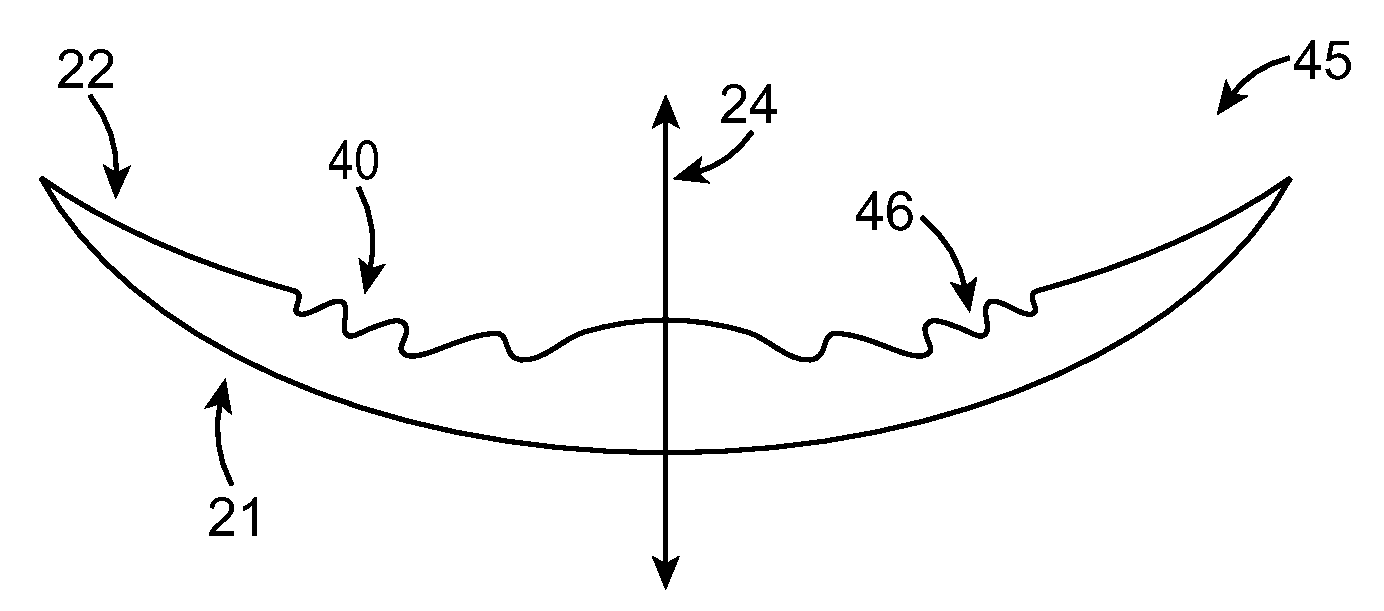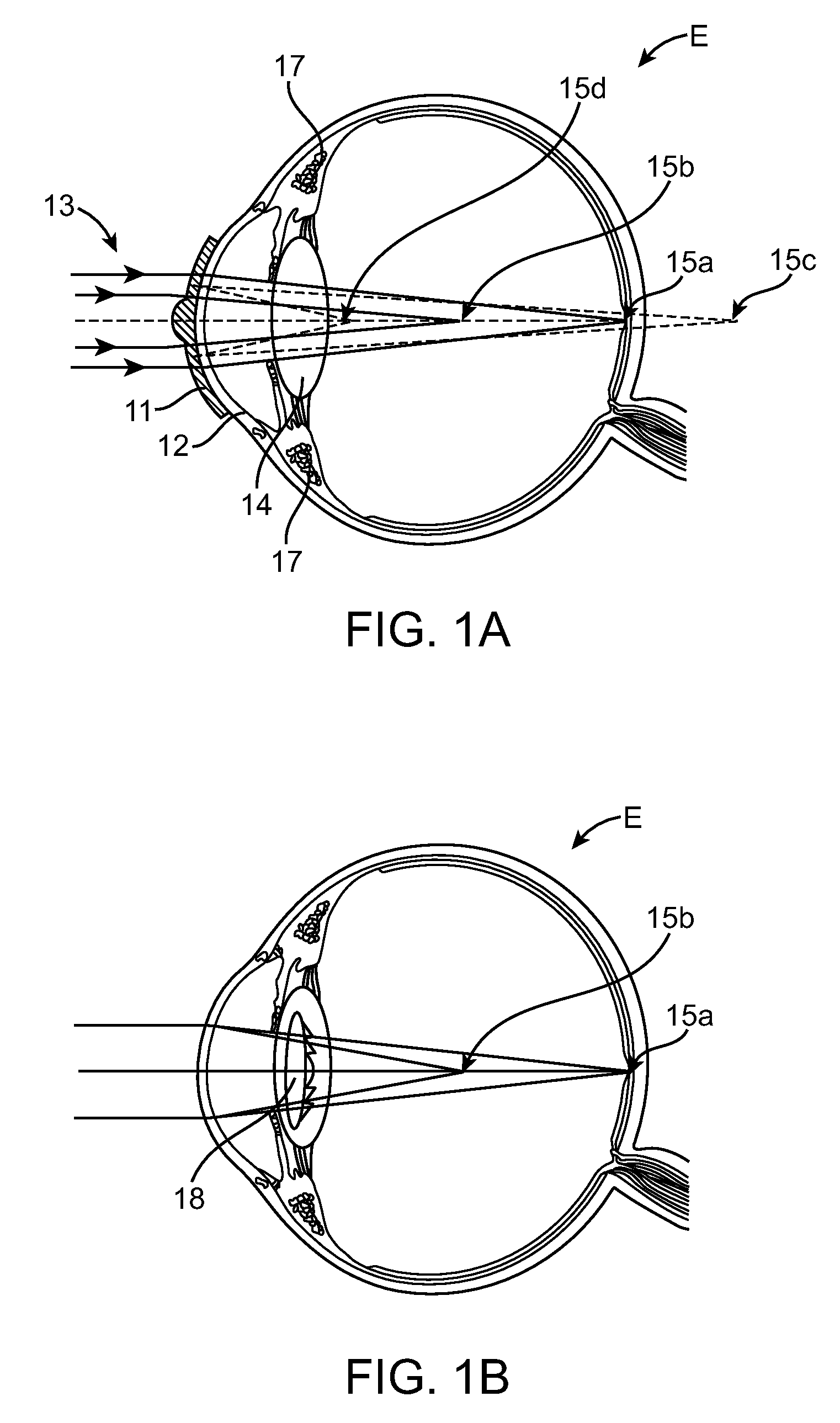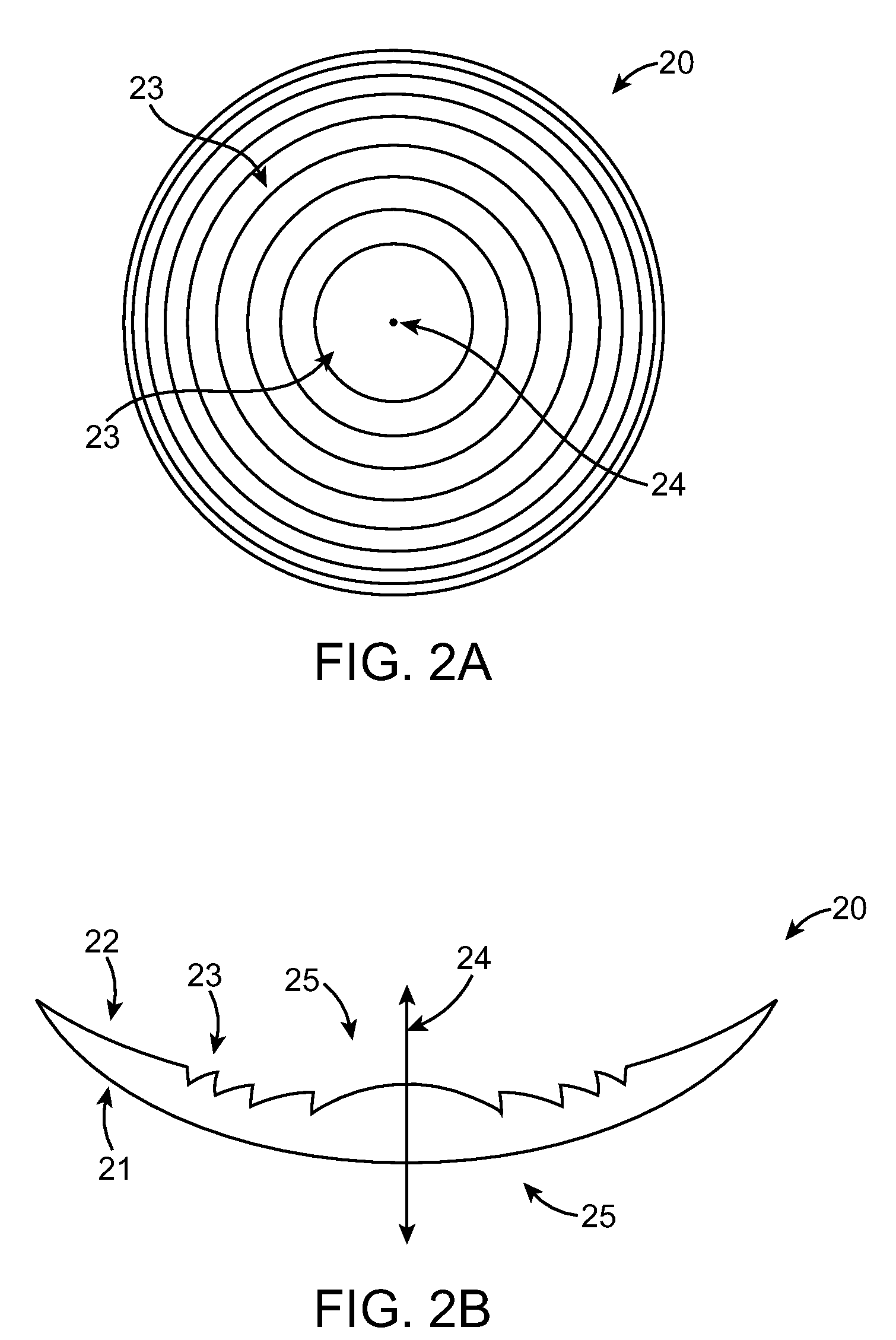Diffractive Multifocal Lens Having Radially Varying Light Distribution
a diffractive, multi-focal technology, applied in optics, medical science, instruments, etc., can solve the problems of affecting vision quality, affecting the ability of presbyopic eyes to quickly and easily refocus on objects, and crystalline lenses that have lost almost all elastic properties and only limited ability to change shape, so as to reduce light scatter, improve light energy distribution, and reduce the effect of light scatter
- Summary
- Abstract
- Description
- Claims
- Application Information
AI Technical Summary
Benefits of technology
Problems solved by technology
Method used
Image
Examples
Embodiment Construction
[0036]The present invention generally provides improved lenses and imaging systems. Embodiments of the invention may find their most immediate use may be in the form of improved ophthalmic devices, systems, and methods. Exemplary embodiments of the present invention provide improved ophthalmic lenses (including, for example contact lenses, intraocular lenses (IOLs), corneal lenses and the like) and associated methods for their design and use. Embodiments of the present invention include monofocal diffractive lenses, bifocal diffractive lenses, and multifocal diffractive lenses. Exemplary embodiments provide multifocal diffractive ophthalmic lenses having reduced light scatter and / or improved light energy distribution so as to enhance viewing performance, for example, through subtle shaping of a smoothly curving profile extending across a plurality of echelettes. The surface is generally optically smooth to help reduce scatter. As used herein, “optically smooth” means having an avera...
PUM
 Login to View More
Login to View More Abstract
Description
Claims
Application Information
 Login to View More
Login to View More - R&D
- Intellectual Property
- Life Sciences
- Materials
- Tech Scout
- Unparalleled Data Quality
- Higher Quality Content
- 60% Fewer Hallucinations
Browse by: Latest US Patents, China's latest patents, Technical Efficacy Thesaurus, Application Domain, Technology Topic, Popular Technical Reports.
© 2025 PatSnap. All rights reserved.Legal|Privacy policy|Modern Slavery Act Transparency Statement|Sitemap|About US| Contact US: help@patsnap.com



